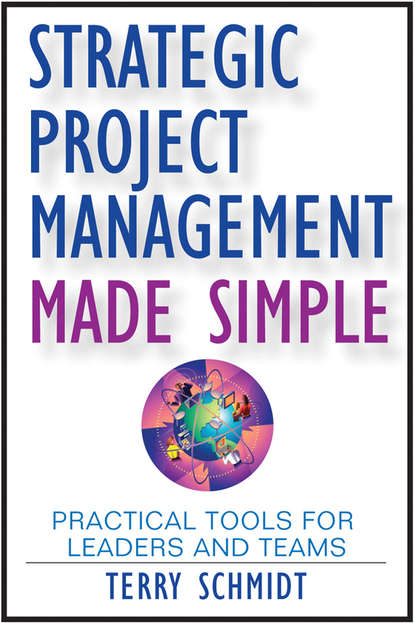Книга "Простой стратегический проектный менеджмент. Практические инструменты для лидеров и команд" предлагает новый подход к проектированию и реализации стратегических проектов, который поможет избежать ошибок, связанных с несистематичным и неструктурированным подходом к их выполнению. Авторы книги утверждают, что большинство проектов и стратегий не получают реализации из-за отсутствия четкого и понятного плана, который бы объединял все идеи и инициативы в единый стратегический подход.
Основой книги является методика, основанная на четырех ключевых вопросах, которые необходимо задать, чтобы создать крепкую и устойчивую стратегическую основу для команды. Эти вопросы звучат так: 1) Что мы пытаемся достичь и для чего? 2) Как мы будем измерять успех? 3) Какие другие условия должны быть выполнены? 4) Как мы туда доберемся?
Авторы книги предлагают начинать с понимания целей и задач проекта, определять критерии успеха, выявлять риски и планировать бюджет и расписание только после ответа на эти вопросы. Эти четыре вопроса помогут читателям создать простой, но эффективный инструмент, который называется "логический каркас" (LogFrame) - системное мышление, которое позволяет создать стратегический план в виде интерактивной матрицы 4x4.
Книга содержит множество запоминающихся концепций и инструментов ("четыре ключевых вопроса", "матрица LogFrame", "если-то думание" и "формула реализации"), которые помогут лидерам и командам создать качественный стратегический план и осуществить его успешную реализацию.
When Fortune Magazine said that 70 percent of strategies fail they were just revealing the fact that most strategies are logical, but they are impossible to execute because our execution methods are so crude. The premise of this book is that many projects don’t come to any fruition due to the clumsy way that we organize and manage them. This book shows you how to use four fundamental questions which are necessary for creating tailored strategies, if you’re going to successfully execute them. The main idea of these questions is essentially framing strategic thinking in the practical context of project management. The book includes clear instructions on how to achieve success. It is different from many project management books, because it focuses on understanding the big picture first. Then, questions are addressed about how to measure success and how to assess potential risks. All in all, this book definitely gives you a new perspective on successful project management. Schimmelmeier blends theoretical knowledge with practical information about how it all works inside your head. Four questions help you document your project strategy and assess your implementation effectively.
Электронная Книга «Strategic Project Management Made Simple. Practical Tools for Leaders and Teams» написана автором Terry Schmidt в году.
Минимальный возраст читателя: 0
Язык: Английский
ISBN: 9780470442920
Описание книги от Terry Schmidt
When Fortune Magazine estimated that 70% of all strategies fail, it also noted that most of these strategies were basically sound, but could not be executed. The central premise of Strategic Project Management Made Simple is that most projects and strategies never get off the ground because of adhoc, haphazard, and obsolete methods used to turn their ideas into coherent and actionable plans. Strategic Project Management Made Simple is the first book to couple a step-by-step process with an interactive thinking tool that takes a strategic approach to designing projects and action initiatives. Strategic Project Management Made Simple builds a solid platform upon four critical questions that are vital for teams to intelligently answer in order to create their own strong, strategic foundation. These questions are: 1. What are we trying to accomplish and why? 2. How will we measure success? 3. What other conditions must exist? 4. How do we get there? This fresh approach begins with clearly understanding the what and why of a project – comprehending the bigger picture goals that are often given only lip service or cursory reviews. The second and third questions clarify success measures and identify the risky assumptions that can later cause pain if not spotted early. The how questions – what are the activities, budgets, and schedules – comes last in our four-question system. By contrast, most project approaches prematurely concentrate on the how without first adequately addressing the three other questions. These four questions guide readers into fleshing out a simple, yet sophisticated, mental workbench called «the Logical Framework» – a Systems Thinking paradigm that lays out one's own project strategy in an easily accessible, interactive 4x4 matrix. The inclusion of memorable features and concepts (four critical questions, LogFrame matrix, If-then thinking, and Implementation Equation) make this book unique.



















